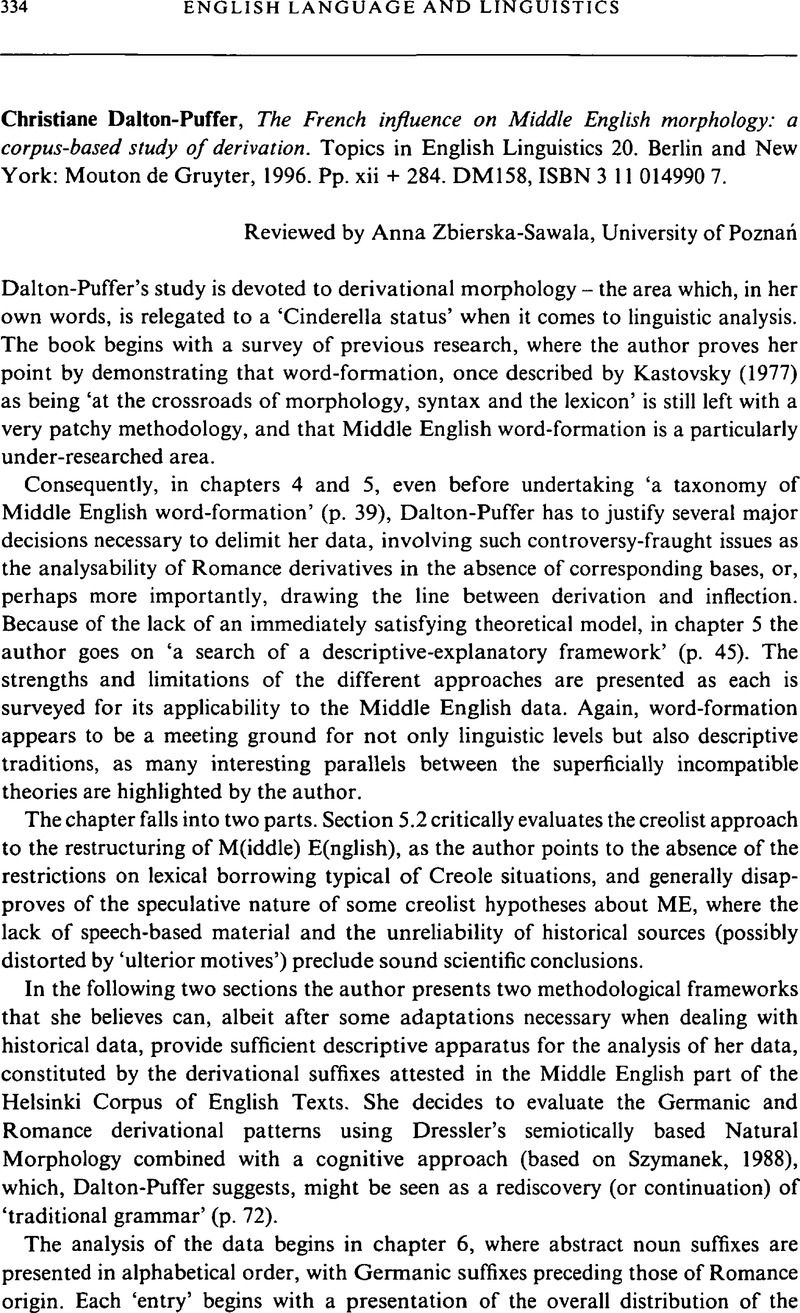No CrossRef data available.
Article contents
Christiane Dalton-Puffer, The French influence on Middle English morphology: a corpus-based study of derivation. Topics in English Linguistics 20. Berlin and New York: Mouton de Gruyter, 1996. Pp. xii + 284. DM158, ISBN 3 11 014990 7.
Published online by Cambridge University Press: 12 September 2008
Abstract
An abstract is not available for this content so a preview has been provided. Please use the Get access link above for information on how to access this content.

- Type
- Reviews
- Information
- Copyright
- Copyright © Cambridge University Press 1998
References
Kastovsky, D. (1977). Word-formation or: At the crossroads of morphology, syntax and the lexicon. Folia Linguistica 10:1/2: 1–33.CrossRefGoogle Scholar
Kastovsky, D. (1988). Typological changes in the history of English morphology. In Fries, U. & Heusser, M. (eds.), Meaning and beyond. Ernst Leisi zum 70. Geburtstag. Tübingen: Narr. 159–78.Google Scholar
Miller, D. G. (1997). The morphological legacy of French: borrowed suffixes on native bases in Middle English. Diachronica 14:2: 233–64.CrossRefGoogle Scholar
Szymanek, B. (1988). Categories and categorization in morphology. Lublin: Catholic University Press.Google Scholar
Zbierska-Sawala, A. (1993). Early Middle English word-formation: semantic aspects of derivational affixation in the AB language. Frankfurt etc.: Peter Lang.Google Scholar




